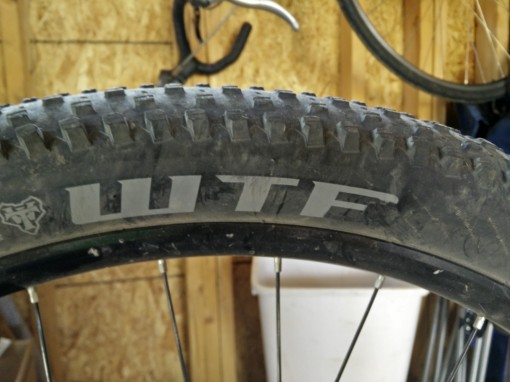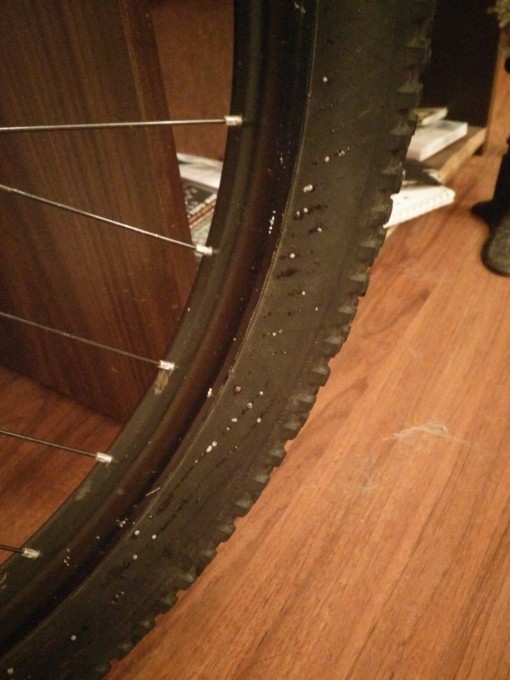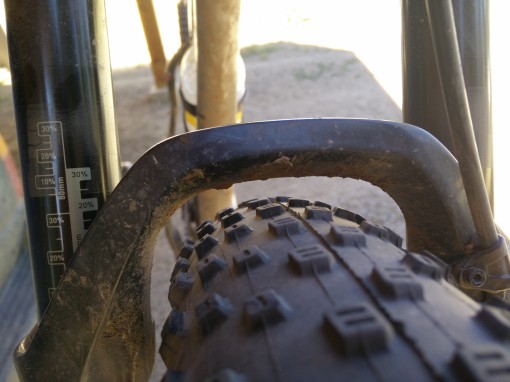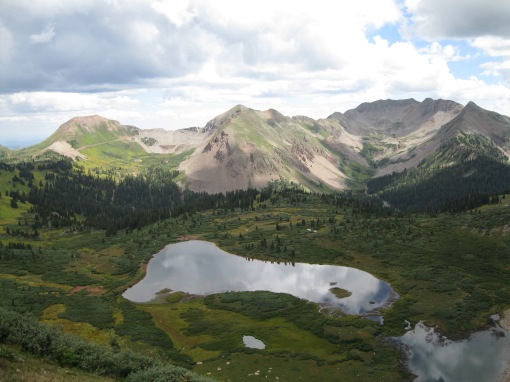Editor’s note: This is a re-publish of a Facebook note written in January of 2009
By Reid Wright
My first couple days of detox were a blur. I wandered around the institute pale and dazed with a skull splitting headache, aching joints and intense pain in my kidneys where all the toxins in my body were being flushed out. I wasn’t recovering from addiction to cocaine, heroin, alcohol or meth – but the everyday American diet.
After learning of the return of my mother’s illness, my sister and I decided to fly with her to the Hippocrates Health Institute (aka “Hippy Death Camp” depending on who you talk to) in Florida for a week long stay, where I knew I would have to survive solely on unfathomable vegetables.
The day before we left, I ate a mountain of Mexican food and a Double Whopper to stock up on calories just to make sure I wouldn’t starve to death in the coming week.
The staff at Hippocrates however, are too smart to let me die. Many of them have a PhD, RN, MD and a slew of other capital letters after their names. Some of them have been with the institute for decades.
The program – described as “health boot camp” – focused on diet, juices, exercise, supplements, various therapies, and education of health issues. A long history of graduates of the program reported full recovery from everything from high blood pressure to cancer.
Lunch and dinner at Hippocrates consisted almost entirely of raw vegetables. Organic sunflower, pea, clover and mung bean sprouts made up the main entrée. Ken Blue, the executive chef, said that the sprouts contained enough vitamins, minerals, proteins and enzymes to make a complete meal by themselves. The other items on the buffet – such as dehydrated foods and prepared salads – were mostly just for fun and variety.
So me and the rest of the inmates sat down and ate our sprouts. Mealtime conversation usually centered around us assuring ourselves out loud to each other that we were doing the right thing and that this would make us better.
My first meal tasted watery and a bit bland, like a salad without dressing. My stomach grumbled at me politely as if to say “Thank you for the salad, now may I please have the rest of my food?”
At night, my sister and I talked about the food we were craving from the outside world, nearly reducing ourselves to tears.
As the week went on however, my taste buds came out of hiding from semester of salty campus food and the flavors of the food began to come out. By the end of the week, I found myself relishing the complex flavors of the juicy sprouts. The last couple of meals I was unable to finish a whole plate without feeling full.
The premise of a raw food diet is to eat food that is living and uncooked. Almost all of the seeds, nuts, beans, grains and lentils at Hippocrates were soaked and sprouted – allowing them to germinate and begin processes to alter their internal chemistry. In other words, the food is literally alive at the time of consumption.
The program not only fed us healthy food, but subjected us to a regiment of classes on how to take care of ourselves. It was a cruel and unusual joke that they told us to drink water all day and then subjected us to two hour classes without bathroom breaks.
Hippocrates Co-Director Brian Clement PhD L.N.C. walks and talks like a stereotypical self-help opportunist. He wears a crisp suit and tie with hair spray with a trimmed goatee. He is a master of the stage, and the patrons of his classes seemed allured by his presence.
He said that cooking food kills helpful enzymes and chemically alters nutrients into a form that is harder for the body to process. In contrast, living foods contain more nutrients, enzymes, oxygen, and bio-electricity.
While I would personally like to debate some of the finer points of Brian’s lectures (for example, he cited a common misconception that humans only use 3 percent of their brains, any neurologist will tell you otherwise), I agree with many of his fundamental arguments.
He said that we humans have strayed from the diet of our ancestors. We have altered our foods and eating habits so severely in the last hundred years that evolution is unable to keep up.
Food and drug companies are pumping foods full of cheap additives to make products more profitable. At the same time, the companies we work for are training us to spend more time working and less time taking care of ourselves which is more profitable for them at least in the short-term.
Overall, an unhealthy person is more profitable than a healthy one.
“Sometimes I think that what I do is important,” Brian said. “But then I realize that I’m teaching grown adults how to eat right and take care of themselves. There’s something fundamentally wrong with that.”
He also said that food is not a religion, and people should not judge each other as sinner or saint based on what they choose eat. Studies show that for the first time in history, people over 50 years old are actually healthier than those under 30.
The program also included a daily dosage of juices. We had 16 oz of “green drink” three times a day, which consisted mostly of cucumber, celery, and sprout juices. When we fasted on Thursday to accelerate the detoxification process, I was able to go all day on the juices alone – hardly getting hungry at all.
Wheatgrass juice was also taken daily as an important healing agent. It tasted like lawnmower mulch, but had a sweet and refreshing aftertaste (I overheard other people saying that store-bought wheatgrass juice is bitter and hard to drink). I found it to be a great stimulant – almost like a shot of espresso that lasted almost all day. Once, I took it at six in the evening and it kept me up past midnight.
Brian said the nutritional and medicinal properties of wheatgrass were not discovered by science, but by instinct. Hippocrates founder Ann Wigmore observed that cats and dogs ate grass when they are sick, so she did the same to recover from her own illness. She placed several kinds of grass in front of neighborhood pets and observed that they would consistently sniff the other grasses and then eat the wheat grass.
Decades later, scientists are finding evidence that wheatgrass is an excellent blood purifier, cleanser and detoxifier. Hippocrates is the only natural health organization to have large amounts of scientific blood test data on its patients showing significant improvements in illnesses and cancer because of wheatgrass treatment, Brian said.
Wheatgrass can also be taken rectally, where it helps colon health and is absorbed into the body more quickly and efficiently. They gave us a class on how to perform daily enemas and wheatgrass injections and then passed out enema bags to everyone. My sister held up hers to me and declared, “I was OK until THIS.”
I decided to go through with it for the sake of science. I’d come this far and felt I had to go along with the program 100 percent to see if it worked or not. After the initial unpleasantness of the enema (I’ll spare you the details), I felt quite good. The rectal wheatgrass injection gave an energy boost comparable to a double mocha, but it was more mellow and longer in duration.
The wheatgrass and sprouts are grown in trays on-site at the Hippocrates greenhouse, and they gave us instructions on how to grow our own. Obviously, this is exponentially cheaper than paying $10 a pound for the stuff at a natural foods store. Also, growing your own eliminates the need for environmentally harmful plastic packaging and the carbon emissions associated with shipping foods from places like Canada or Mexico.
The program also included a series of therapies at the spa. They zapped me with a series of infrared, electromagnetic, and crystal energies that I will never understand. What I did understand, was the Swedish massage, which was nothing short of divine. The masseuse pressed her fingers hard into my neck and shoulders, which were hard as wood.
“This is where you keep your stress,” she said merrily.
“Oh,” I said. “I was wondering where I put that.”
No matter what anyone tells you, a colonic is anything but “fun”. Unless of course, you think someone shoving a garden hose up your butt and cranking it on full tilt is your idea of a good time.
The bottom line:
At the end of the week, I felt great and didn’t want to leave. The pain in my knees and stomach were gone and I had a ton of energy. Was it as euphoric as the apex of a good coffee high? No. But it lasted all day and I was calmer, in a better mood and less jittery. For once in a good long while, I felt like someone my age should feel, instead of a cranky old man.
At first, I was confused because I hadn’t lost weight like most of the other patients had. Then I looked in the bathroom mirror and realized I had actually put on some muscle mass – something I had previously been told was almost impossible without animal proteins.
Overall, I found the staff at Hippocrates knowledgeable and genuinely motivated to help people. But even more amazing, were the other guests.
We grow up reading books and watching movies that chisel into our psyche the concept that heroes are people who battle and defeat the bad guys and external enemies. But in 25 years of wandering, I’ve never encountered a truly bad person. I have however, found plenty of enemies within.
We all have little voices inside of us that tell us we can get away with not taking care of ourselves – that other people will come to our rescue and we can just postpone our health until later in life when doctors or shrinks will simply ‘fix’ us.
A lot of the guests I met at Hippocrates had lived out this mentality, learning the hard way it is far from the truth. They are at the brink of losing it all – battling diabetes, drug addiction and cancer. Some had even been told that they had a limited amount of time left to live.
But instead of giving up, they took on the responsibility to learn how to take care of themselves – instead of blaming others for their unhappiness and unhealthiness. I watched as they turned and faced their internal enemies: addiction, weakness, depression and illness – to achieve victory over themselves.
They are all my heroes.
























